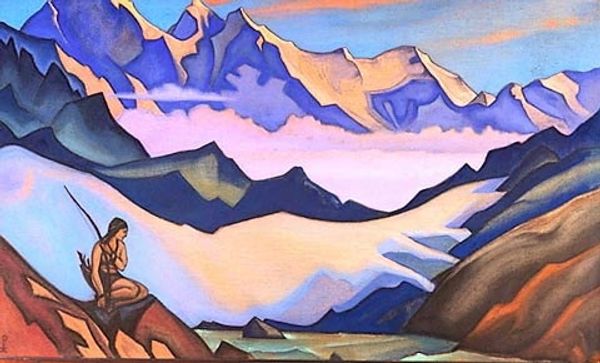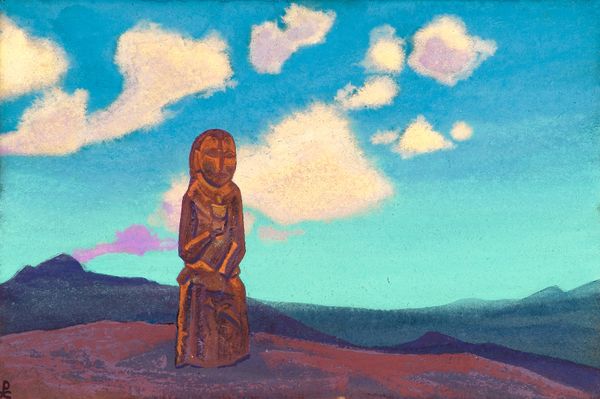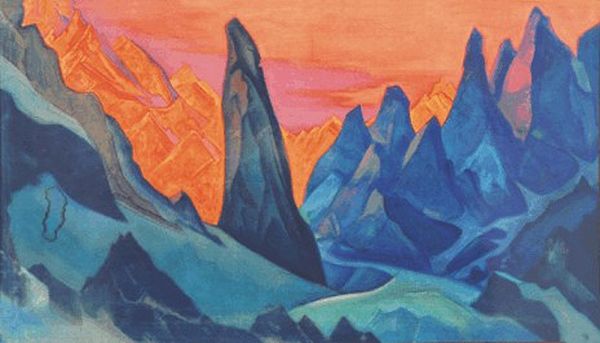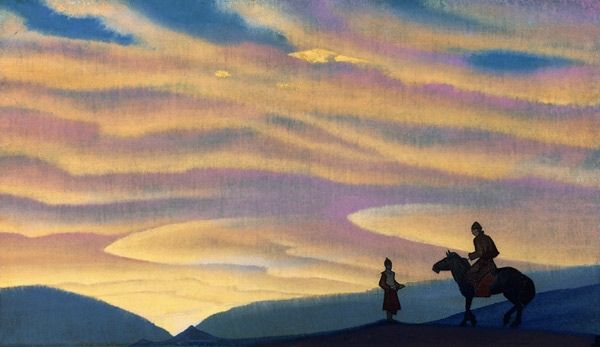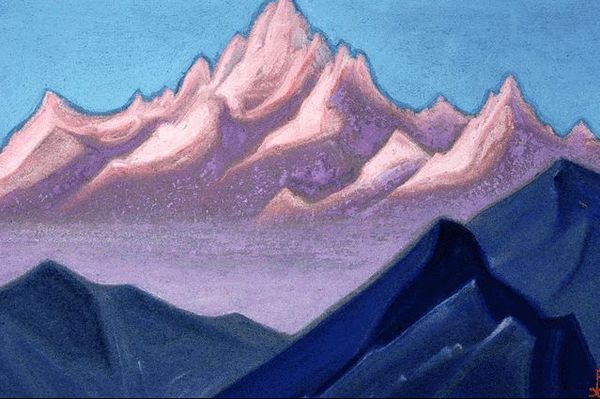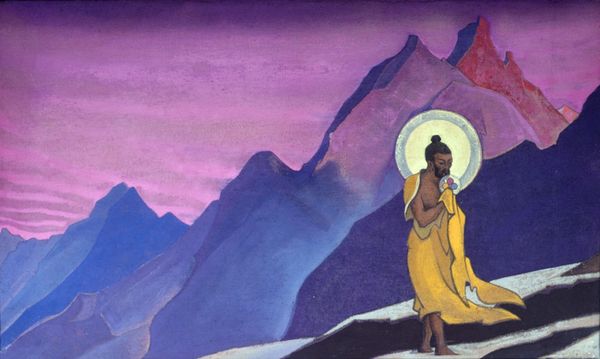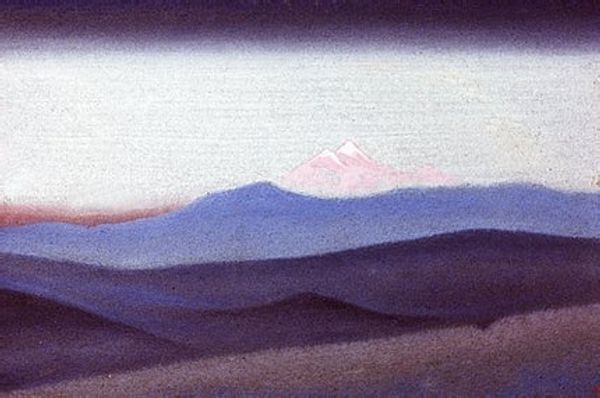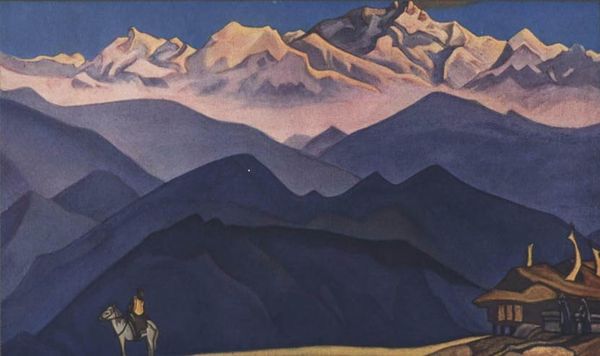
Copyright: Public domain
Curator: Looking at Nicholas Roerich’s "Thought" from 1946, I'm immediately struck by the solitude it evokes, a quiet contemplation within a vast landscape. The figure, seemingly a sage, perched upon the mountain, feels symbolic of humanity’s quest for meaning. Editor: The layers of mountain ranges crafted with oil paint provide a stark contrast to the sage. How exactly was this solitary figure placed? What support structures? I am concerned the painting may fall. Curator: Precisely! The peaks evoke a deep sense of history and spirituality for which Roerich is known. One can’t separate the artist’s interest in Eastern philosophies from the image—consider this as you explore his symbolic imagery. How might the figure’s placement atop this harsh terrain reflect struggles for enlightenment, both historical and personal? Editor: I suppose Roerich uses thin washes to capture light on the summit. But notice the distinct outline in dark color for all the mountains in contrast to the blended colors in the skies above. What exactly influenced his labor of such distinctions here? Curator: To understand Roerich, we must acknowledge his interest in the spiritual. Some view the mountainous landscapes as the body—it is something concrete for people in power to exploit for wealth. So, do the figure and that same exploitation co-exist peacefully, I wonder? Editor: Given Roerich's focus on theosophy, is he showing that only mountains can endure all labor? They support a spiritual body and are, in essence, naturally resilient? The brushstrokes feel considered. Curator: That’s astute! The painting invites an introspective approach, linking internal mental landscapes with external geographic ones. Editor: It gives much to process materially; considering all this together truly expands our appreciation for what the artwork is offering.
Comments
No comments
Be the first to comment and join the conversation on the ultimate creative platform.
